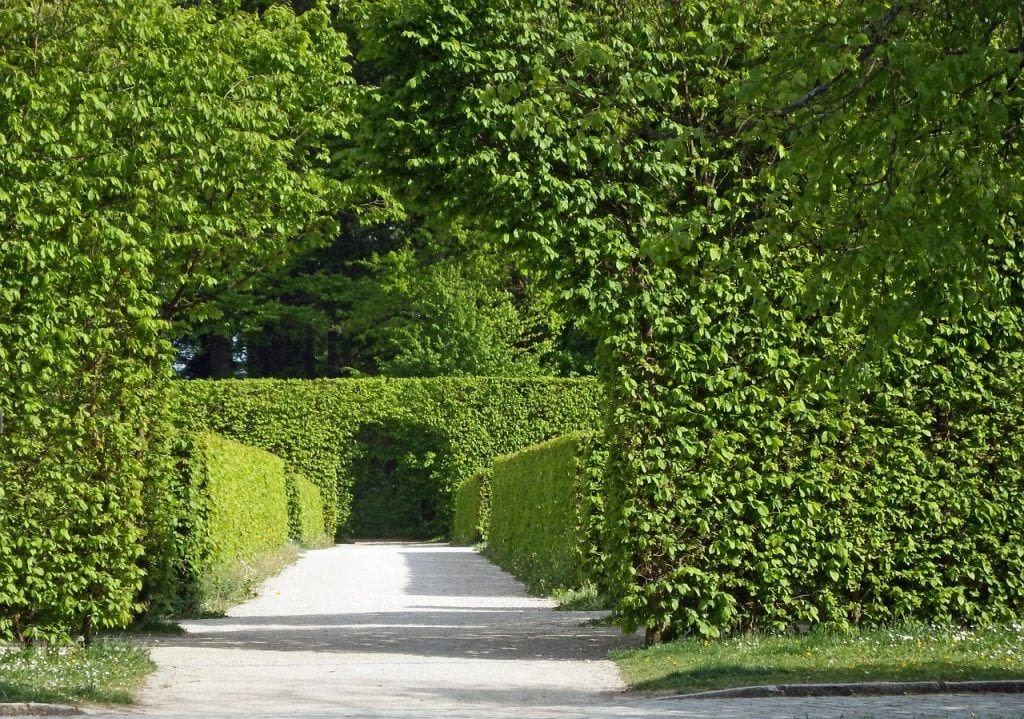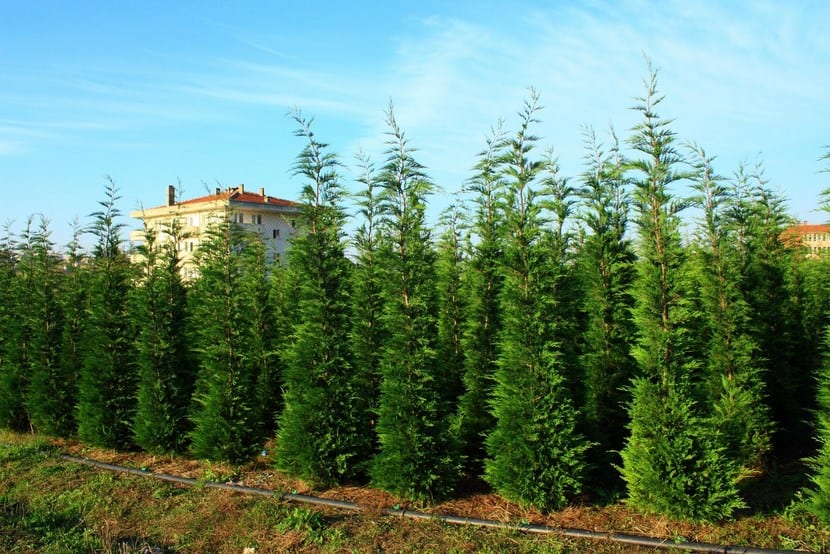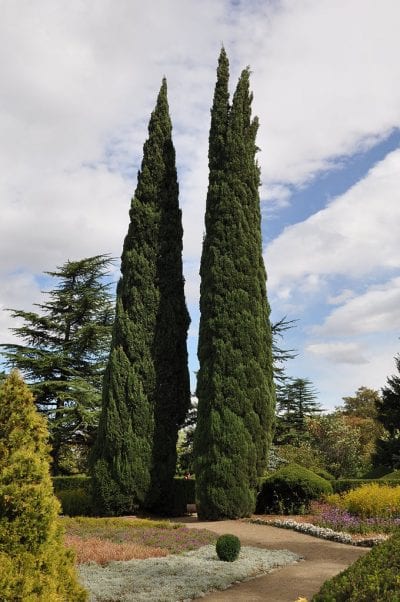
Do you live in a very windy area? Although ventilation is very important for plants, there are some that do not like the fact that the wind is constantly moving them, especially if they are young. In fact, it is not surprising that they are not well, that their stems break, or that they even run out of leaves with the danger that this entails if they are evergreen or are in a time during which they should be growing.
Fortunately, there is one thing we can do. But, How to make a windbreak hedge?
What is it?

First we are going to talk about what a windbreak hedge is, because although the name already says it all, we may have doubts about what types of plants to use. As well, This type of hedge is made with tall plant beings, 4 meters or more, that have a dense pyramidal crown or that, failing that, by means of pruning it can be achieved that they form a green wall that does not let the wind pass (like cypresses for example).
The objective is, obviously, to prevent the passage of air, and incidentally to achieve a healthier and more beautiful garden. It is not difficult to do, but it requires patience since the growth rate of the plants is what it is, and it is not possible to accelerate everything that we sometimes want (yes we can a little, fertilizing the plants throughout the spring and the summer with ecological fertilizers once a month, but that's it).
How is it done?
The first thing to do is choose plants. These can be deciduous or evergreen, but it is preferable that they be evergreen, especially if the wind blows strongly all year round in our area. Some of the most recommended are:

Cupressus sempervirens var. horizontalis
- Betula: it is a very fast growing deciduous tree. Resists up to -18ºC. We have to plant it leaving a distance of between 40 and 50cm between one specimen and another.
- cupressus: any species of cypress will do us well. They are evergreen, and they resist frosts down to -18ºC without problems. Of course, we have to plant them at a distance of 50-70cm apart.
- Laurus nobilis: laurel is an evergreen shrub or tree highly resistant to drought and frost down to -12ºC. We must plant it at a distance of about 40cm between one specimen and another.
- Thuja: Any species is interesting, but they are somewhat slower than cypress trees. They are also evergreen and resist frosts down to -18ºC. They are planted at a distance of 30-40cm between them.
Afterwards, Preparing the terrain, removing any wild herbs, stones, debris that may be there. And immediately afterwards, the drip irrigation system is paid and installed.
Finally, we will only have to plant the plants and take care of them so that they grow up healthy and beautiful 🙂. Easy right? Do you dare to create one?